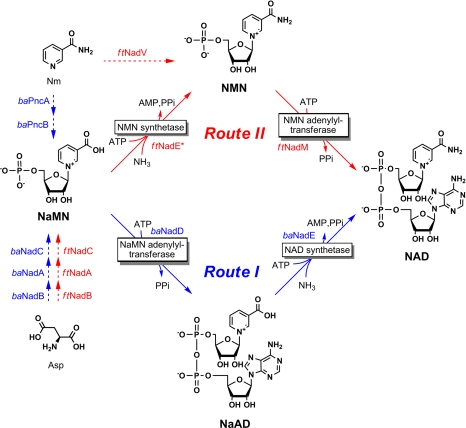Fig. 1.
Genomic reconstruction of NAD biosynthesis in F. tularensis and B. anthracis. In conventional route I, as occurs in B. anthracis (outlined in blue), NaMN is adenylated to NaAD by baNadD, which is then amidated to NAD by NAD synthetase baNadE. In route II postulated for F. tularensis (outlined in red), an NMN synthetase activity of ftNadE* amidates the NaMN precursor to NMN before its adenylylation by ftNadM. De novo biosynthesis of NaMN from aspartate (via NadB, NadA, and NadC enzymes), a common route for both species, and 2 alternative Nm salvage pathways, deamidating (via PncA and PncB enzymes as in B. anthracis) and nondeamidating (via NadV enzymes as in F. tularensis), are shown by dashed arrows with respective color coding.

